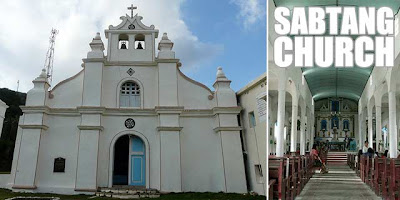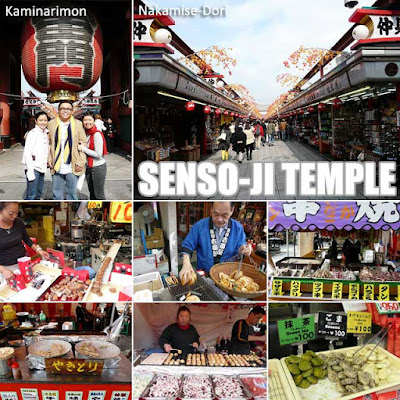 You’ve never been to Batanes if you don’t make the trip to Sabtang Island. If you’re motion sick, you’ll have to prepare for a rough ride outside the summer months. But it’s most definitely worth it!
You’ve never been to Batanes if you don’t make the trip to Sabtang Island. If you’re motion sick, you’ll have to prepare for a rough ride outside the summer months. But it’s most definitely worth it!We were up really early today since the first trip was scheduled to leave at 6 a.m. We were there on time but after close to two hours of waiting, the boat had not yet arrived and we were told that the captain was still waiting the for the waves to calm down a bit. It was close to 9 a.m. when we got to board the boat. The ride was terribly rough and I got sea sick. I had to take a breather when we arrived in Sabtang before we left the town proper for a jeep ride around the island.
 In Sabtang, you get to visit the traditional villages of Savidug and Chavayan. These barangays remain mostly untouched and take you back in time when life was so simple. In fact, they are candidates for inscription in the UNESCO World Heritage List. And I hope the locals keep their village and way of life the way it is.
In Sabtang, you get to visit the traditional villages of Savidug and Chavayan. These barangays remain mostly untouched and take you back in time when life was so simple. In fact, they are candidates for inscription in the UNESCO World Heritage List. And I hope the locals keep their village and way of life the way it is. The first village outside the town proper which you'll stopover at is Savidug. You'll have the chance to walk around the barangay and marvel at all the centuries-old Batanes stone houses that comprise the village. On the way to our next stop, we saw the Savidug idiang. Idiangs are pre-colonial fortified settlements of the ancient Ivatans.
The first village outside the town proper which you'll stopover at is Savidug. You'll have the chance to walk around the barangay and marvel at all the centuries-old Batanes stone houses that comprise the village. On the way to our next stop, we saw the Savidug idiang. Idiangs are pre-colonial fortified settlements of the ancient Ivatans. We stopped by the Chamantad Sanctuary where we were afforded panoramic views of the Sabtang coast. It was a grand experience hiking to the edge to the cliffs for a fantastic view of the beach down below. But do be careful since the winds can be very strong. But that's part of the experience.
We stopped by the Chamantad Sanctuary where we were afforded panoramic views of the Sabtang coast. It was a grand experience hiking to the edge to the cliffs for a fantastic view of the beach down below. But do be careful since the winds can be very strong. But that's part of the experience. In Chavayan, it was fun exploring the narrow streets lined by centuries-old stone houses with thick walls and cogon roofs. One could also purchase the traditional vakul head-gear worn by Ivatan women to shield them from the elements. You can also ask the locals to get you a coconut which you can eat the way the locals do, with a makeshift spoon chipped off from the husk.
In Chavayan, it was fun exploring the narrow streets lined by centuries-old stone houses with thick walls and cogon roofs. One could also purchase the traditional vakul head-gear worn by Ivatan women to shield them from the elements. You can also ask the locals to get you a coconut which you can eat the way the locals do, with a makeshift spoon chipped off from the husk.There’s also a quaint chapel at the edge of the village built amidst the backdrop of grand mountains. I wish the priest didn't add that ugly extension at the back! They should take it out.

 Back in San Vicente Port at the town proper, we were served a sumptuous lunch composed of lobster and adobo. You can try to request for coconut crabs, a local treat! I didn't eat much since I knew the ride back would be rough again. So I used my extra time to visit Barangay Malakdang, one of the poblacion barangays. The Sabtang Church is wonderfully preserved as well except for a few cement alterations to the convento which I hope the priest would revert back to its original state.
Back in San Vicente Port at the town proper, we were served a sumptuous lunch composed of lobster and adobo. You can try to request for coconut crabs, a local treat! I didn't eat much since I knew the ride back would be rough again. So I used my extra time to visit Barangay Malakdang, one of the poblacion barangays. The Sabtang Church is wonderfully preserved as well except for a few cement alterations to the convento which I hope the priest would revert back to its original state. Before heading back to Batan Island, we visited Nakabuang Beach, famous for its natural rock arch formation. We didn't have time to swim though. And besides, it was too cold. If you have more time and if you're extra adventurous, you could opt to stay overnight and schedule a visit to Sumnanga which is called "Little Hong Kong" because of the cobblestones that used to cover its narrow streets.
Before heading back to Batan Island, we visited Nakabuang Beach, famous for its natural rock arch formation. We didn't have time to swim though. And besides, it was too cold. If you have more time and if you're extra adventurous, you could opt to stay overnight and schedule a visit to Sumnanga which is called "Little Hong Kong" because of the cobblestones that used to cover its narrow streets.We went back to the port and made our way back to Batan. Exhausted from the two boat rides, I decided to rest the whole night. But Sabtang is indeed a treasure!
Part 1: Batanes, undiscovered paradise up north
Part 2: Marlboro Country, Mahatao Church and more from Batan Island
Part 4: Batanes hotels and restaurants plus exploring Batanes by bike
















